In the rich tapestry of ancient Roman culture, mythology holds a pivotal place. These stories were not merely tales of the past; they were central to the Romans’ understanding of their origins and destiny. Through myth, Romans explored themes of power, virtue, and divine intervention, shaping their worldviews and societal norms.
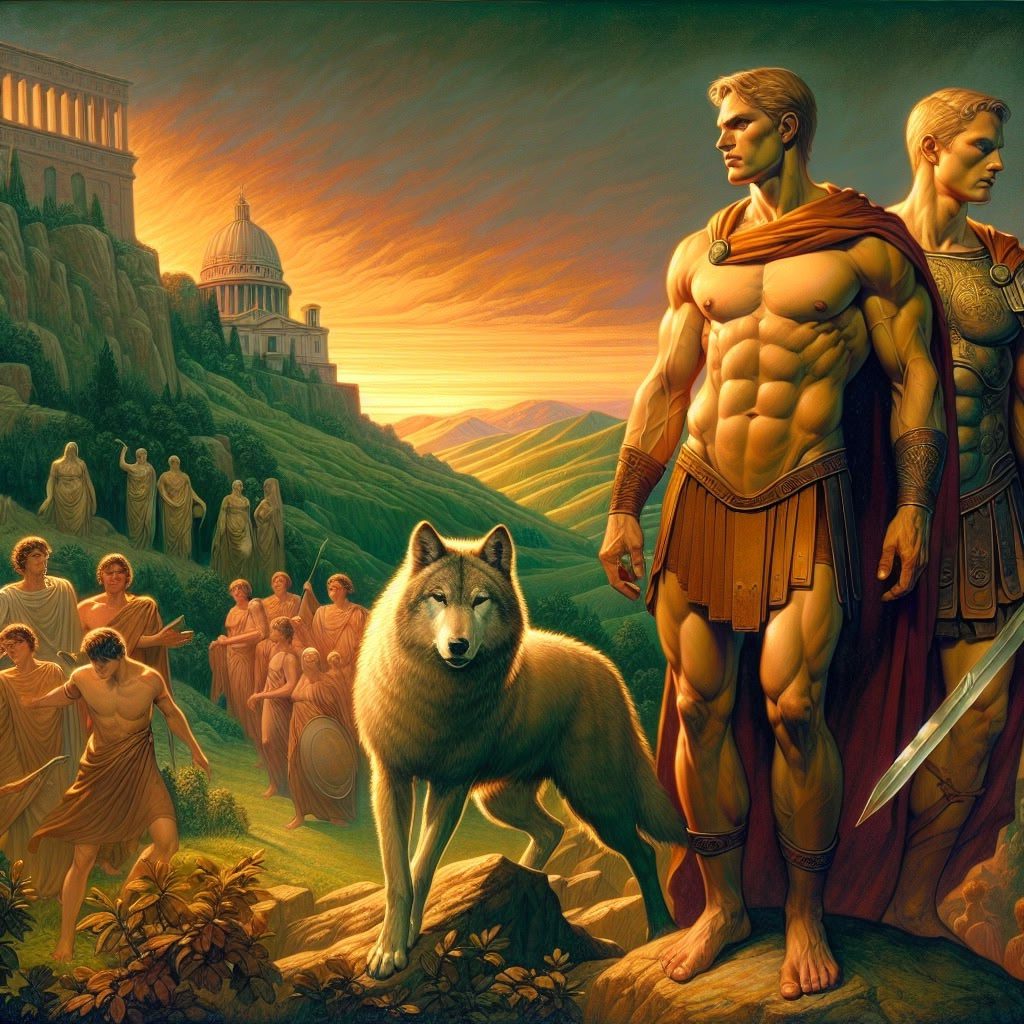
At the heart of Roman mythology are the figures of Romulus, Remus, and Aeneas. Romulus and Remus, the legendary twin brothers raised by a she-wolf, are credited with founding the city of Rome. Their story speaks to themes of loyalty and betrayal, reflecting the complexities of human relationships. Meanwhile, Aeneas, the Trojan hero whose journey is immortalized in Virgil’s Aeneid, embodies the destined greatness of Rome. His adventures from the ruins of Troy to the shores of Italy symbolize the divine mandate and virtues that defined Roman identity.

The Legend of Romulus and Remus
The tale of Romulus and Remus is one of the most enduring legends in Roman mythology, tracing the origins of Rome back to a pair of abandoned twins. According to the myth, the brothers were the sons of Rhea Silvia and Mars, the god of war. Their birth was fraught with danger, as their great-uncle Amulius, fearing their potential claim to his throne, ordered them to be cast into the Tiber River.
However, fate intervened. The twins were miraculously saved when the river’s waters carried their basket to safety. It was here that they encountered one of the most iconic figures in their story—a nurturing she-wolf who found and cared for them. “Raised by a she-wolf, the twins grew strong and resilient,” embodying the raw power and protective nature of their foster mother.
As they matured, Romulus and Remus eventually reclaimed their rightful place, overthrowing Amulius. Their journey from abandoned infants to the founders of Rome symbolizes resilience and divine providence, setting the stage for the city’s mythic foundation and its rise to greatness.
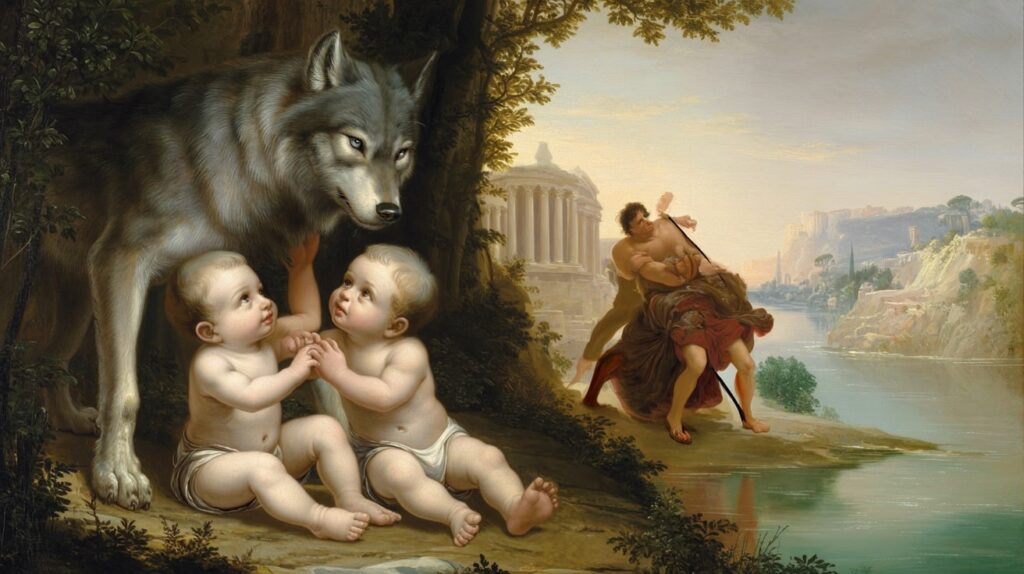
Themes in the Romulus and Remus Myth
The myth of Romulus and Remus encapsulates several profound themes that continue to resonate through Roman culture and history.
- Loyalty and Brotherhood: The bond between Romulus and Remus is emblematic of loyalty and camaraderie. Raised together in the wilderness by a she-wolf, their relationship underscores the importance of unity and shared purpose. This theme is evident as they join forces to overthrow Amulius, showcasing their unwavering support for one another.
- Betrayal and Conflict: Despite their brotherly bond, the story tragically culminates in conflict. The disagreement over the founding of Rome’s location leads to betrayal, as Romulus ultimately slays Remus. This act symbolizes the complexities of human ambition and the potential for discord, even among kin.
- Divine Favor and Destiny: The narrative suggests that the twins were favored by the gods, particularly Mars, their divine father. Their survival against the odds and eventual role in founding Rome are portrayed as manifestations of a predestined path, highlighting the influence of divine will in human affairs.
These themes reflect not only the myth’s dramatic narrative but also the broader cultural values and existential questions faced by the Romans.
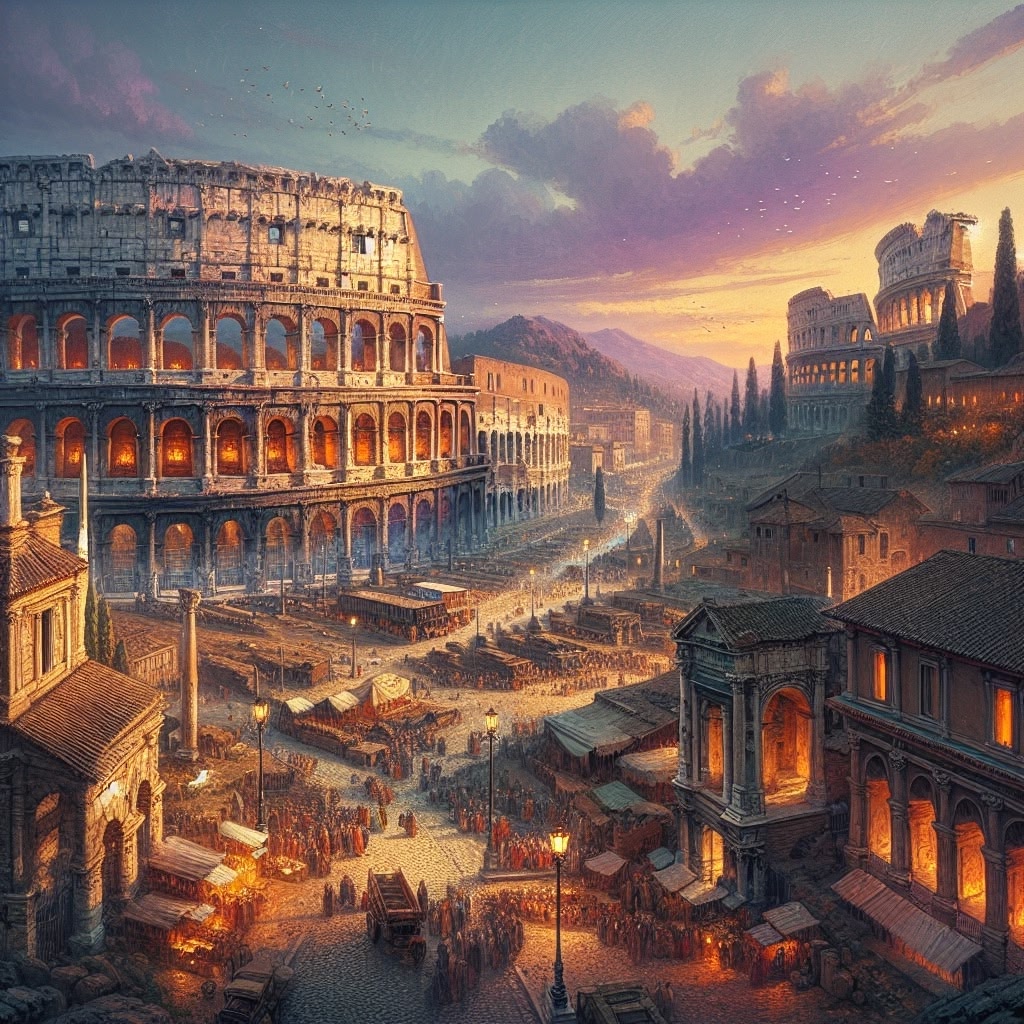
The Founding of Rome
The tale of Romulus founding Rome is a cornerstone of Roman mythology, illustrating themes of ambition and destiny. According to legend, Romulus, after a dispute with his twin brother Remus, established the city on the Palatine Hill in 753 BC. This act not only marked the birth of Rome but also set the stage for its future as a great empire.
Romulus’ role in founding Rome is imbued with symbolism. The city’s creation signifies the triumph of divine favor and human determination. Romulus was seen as a figure chosen by the gods, embodying the virtues of leadership and resilience. His actions in laying the city’s foundation reflected the Romans’ belief in their divine destiny to rule and expand.
| Historical Account | Details |
|---|---|
| Livy’s Account | Emphasizes Romulus’ role as a king and warrior, attributing the city’s success to his leadership. |
| Plutarch’s Account | Focuses on the moral aspects of the founding, highlighting the fraternal conflict. |
The establishment of Rome, through the lens of mythology, conveys a powerful narrative of destiny and divine will, shaping the Roman identity for centuries to come.
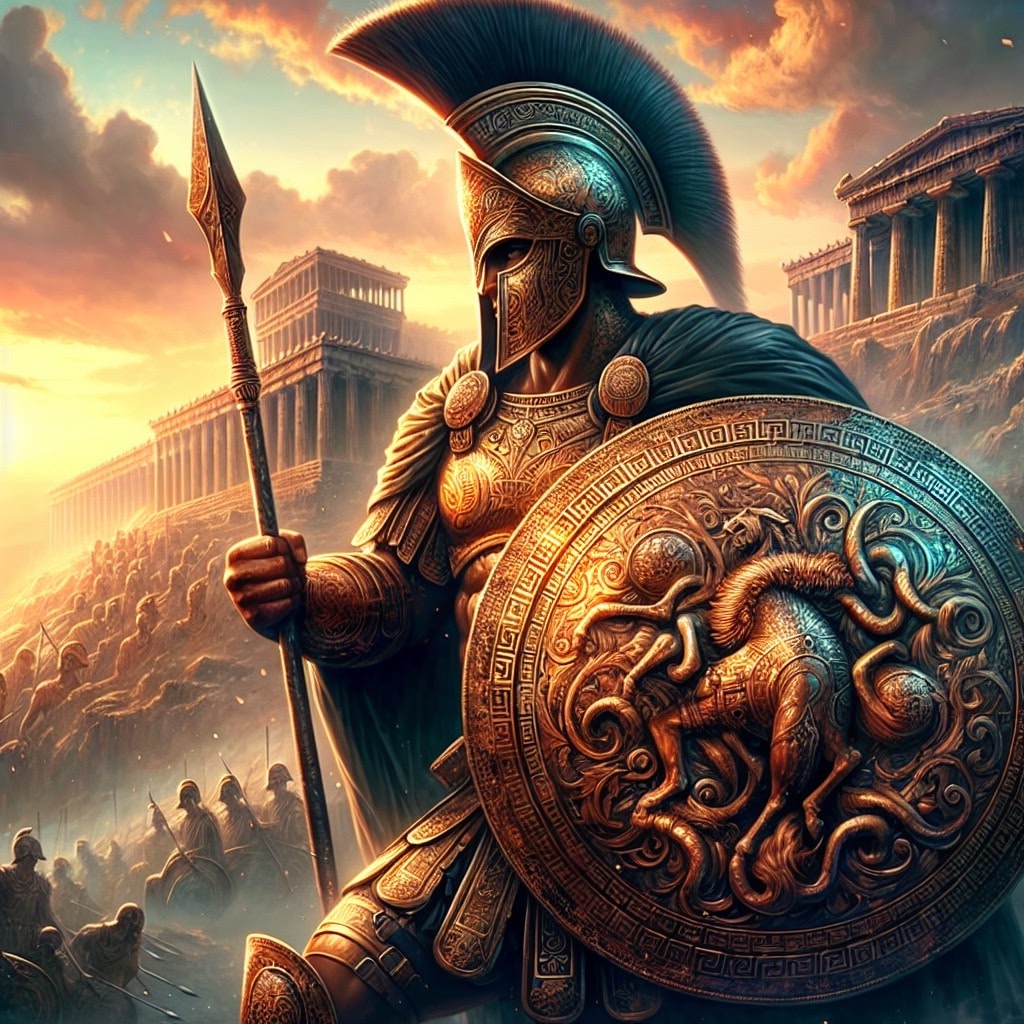
Aeneas: The Trojan Hero
In the aftermath of Troy’s devastating fall, Aeneas emerges as a pivotal figure in Roman mythology. As a noble Trojan prince, he escapes the burning city, carrying his father, Anchises, and leading a group of survivors. This flight from Troy is not merely an escape but a journey destined by the gods toward a new beginning.
“I sailed upon the deep, driven by fate” (Virgil, Aeneid), Aeneas recounts his harrowing voyage. His journey is fraught with peril, including encounters with mythical creatures and the wrath of vengeful deities. Yet, guided by the divine prophecy, he persists, embodying the virtues of duty and resilience.
Upon reaching Italy, Aeneas lays the groundwork for what would become Rome, fulfilling his destiny as the progenitor of a new lineage. This odyssey not only underscores his role as a hero but also symbolizes the resilience and destined greatness of Rome itself. His journey reflects the Roman ideals of perseverance and divine favor, traits that would define the empire’s identity.
Symbolism in Aeneas’ Journey
The journey of Aeneas from the ruins of Troy to the fertile lands of Italy is laden with profound symbolism. It encapsulates the notion of Rome’s destined greatness, serving as a narrative foundation upon which Roman identity and imperial ambition were built.
Key symbols within Aeneas’ journey include:
- Divine Prophecy: Aeneas’ mission is divinely ordained, underscoring the belief that Rome’s establishment was a predetermined event, guided by the gods.
- Perseverance Through Adversity: The trials faced by Aeneas symbolize the Roman virtue of resilience, reflecting the belief that greatness is achieved through overcoming hardships.
- Pietas (Duty): Aeneas embodies the Roman virtue of pietas, demonstrating unwavering duty to family, gods, and destiny, which parallels the Roman emphasis on loyalty and obligation.
In essence, Aeneas’ journey is not merely a tale of survival but an epic of divine sanction and moral fortitude. It mirrors the Roman virtues of perseverance and duty, reinforcing the idea that Rome was destined for greatness, embedded in its cultural and moral fabric.
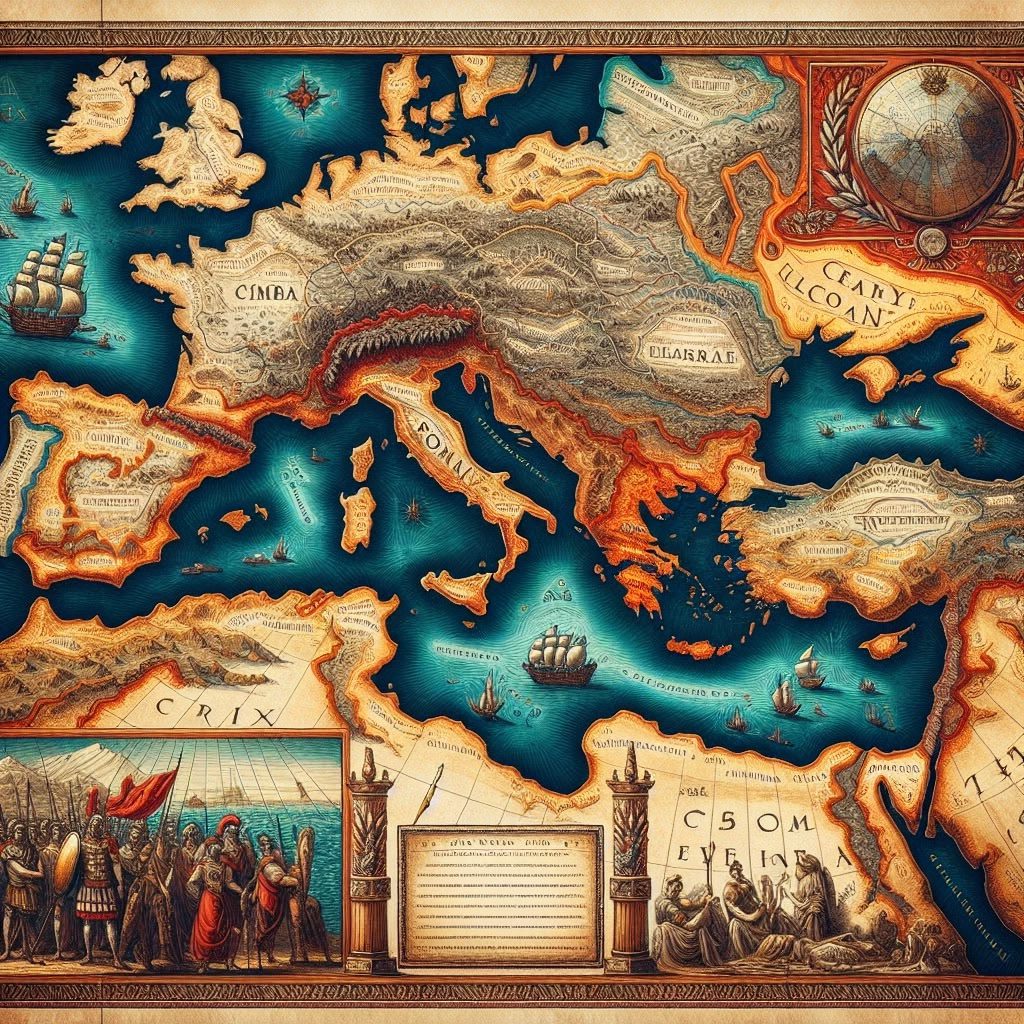
Mythology and Roman Expansion
The rich tapestry of Roman mythology played a pivotal role in justifying Rome’s expansionist policies during its illustrious history. As Rome transitioned from a modest city-state to an expansive empire, mythological narratives served as powerful tools that validated its territorial ambitions.
Central to this was the notion of divine will. Myths of figures like Romulus, Remus, and Aeneas were interpreted as evidence of the gods’ favor toward Rome, suggesting that its conquests were not merely acts of aggression but manifestations of a divine mandate. This belief was instrumental in fostering a sense of destiny among Romans, bolstering their resolve to expand.
Historically, the Roman Empire grew to encompass vast territories across Europe, North Africa, and the Middle East, with estimates suggesting that it controlled over 2 million square miles at its height. This unparalleled expansion was often rationalized through mythological frameworks, portraying Rome as the chosen civilization destined to bring order and civilization to the known world.
In essence, mythology was not merely a collection of ancient tales but a strategic political tool, crafting a narrative that intertwined divine favor with imperial ambition, thus legitimizing Rome’s relentless pursuit of dominance.
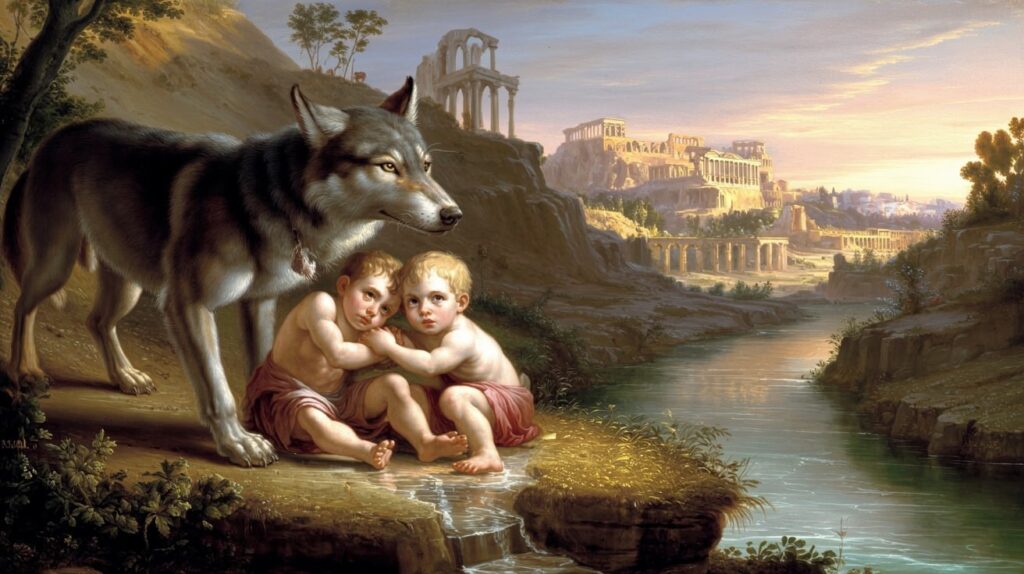
Mythological Influence on Roman Identity
The foundational myths of Romulus, Remus, and Aeneas were integral in shaping the cultural identity of Rome. These narratives provided a shared heritage that united Roman citizens, offering a sense of continuity and common purpose. The myth of Romulus and Remus, raised by a she-wolf, emphasized themes of resilience and survival, aligning closely with the values Rome sought to cultivate within its society.
Moreover, the story of Aeneas, as depicted in Virgil’s Aeneid, underscored Rome’s destined greatness and its divine origins. This narrative not only reinforced Rome’s historical agenda but also served as a moral compass, encapsulating virtues such as duty, piety, and bravery. Such qualities were admired and aspired to by Roman citizens, thus integrating mythology deeply into societal norms.
Historically, these myths were not confined to literary or religious contexts but permeated various aspects of Roman life. Public ceremonies, art, and education often referenced these stories, embedding them into everyday experiences. In doing so, the myths transcended their narrative origins to become essential components of Rome’s collective consciousness, continuously reinforcing its identity and unity.
Comparative Analysis of the Myths
The myths of Romulus, Remus, and Aeneas are rich with overlapping themes and divergent narratives. Both tales serve as cornerstones of Roman mythology, offering insights into the values and aspirations of ancient Rome.
| Aspect | Romulus and Remus | Aeneas |
|---|---|---|
| Themes | Loyalty, Betrayal, Divine Favor | Destined Greatness, Duty, Piety |
| Symbols | She-wolf, Founding of Rome | Troy, Journey to Italy |
| Narrative | Conflict between brothers, Founding of a city | Epic journey, Establishing a new civilization |
| Purpose | Explains Rome’s origins and internal strife | Portrays Rome’s divine destiny and virtues |
In terms of similarities:
- Both myths highlight the divine influence in the founding and future of Rome.
- They underscore themes of destiny and greatness.
Regarding differences:
- The Romulus and Remus myth centers on familial conflict and city founding.
- Aeneas’ story focuses on a journey and the founding of a people.
These narratives, while distinct, collectively reinforce Rome’s ethos and historical narrative.
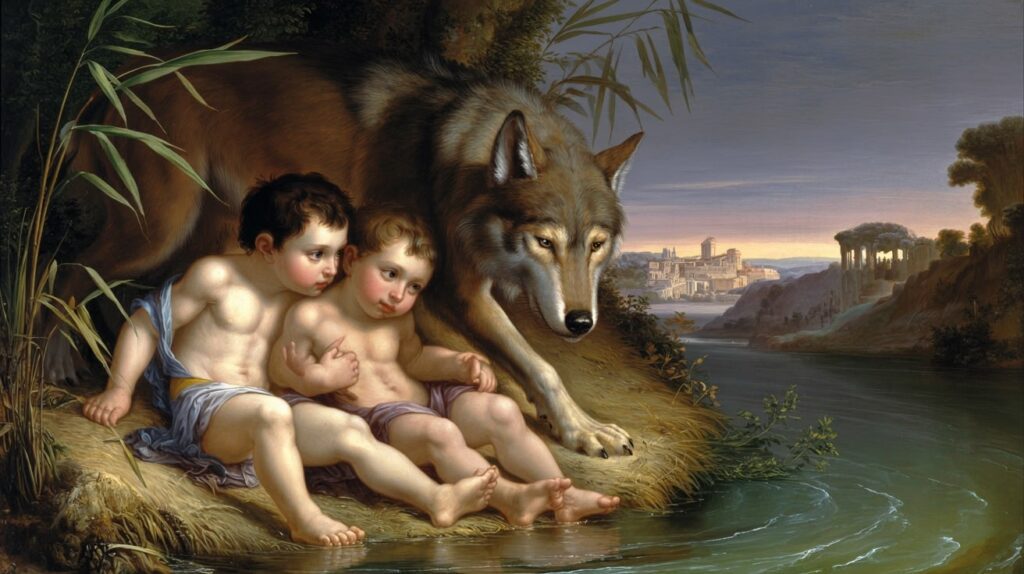
Enduring Legacy of Roman Myths
The myths surrounding Romulus, Remus, and Aeneas have left a profound imprint on Roman culture and beyond. These narratives not only shaped the identity of ancient Rome but also influenced its societal norms and values. The tale of Romulus and Remus, for instance, underscored the importance of loyalty and the potential dangers of betrayal, themes that resonated deeply within Roman governance and military structures.
In literature, these myths have transcended their origins to impact Western storytelling. Virgil’s Aeneid, which chronicles Aeneas’ journey, stands as a cornerstone of Latin literature and has inspired countless works, such as Dante’s Divine Comedy. The epic’s themes of duty and destiny have echoed through time, shaping narratives around heroism and leadership.
Moreover, these myths have served as cultural templates, influencing the arts, politics, and education throughout Roman history and into the Renaissance. The enduring power of these stories illustrates their ability to convey universal truths and ideals, making them timeless elements of cultural heritage.
Conclusion
The myths of Romulus, Remus, and Aeneas are central to understanding the cultural and historical fabric of ancient Rome. These narratives not only highlight the themes of loyalty, betrayal, and divine favor but also serve to justify Rome’s imperial ambitions through divine providence. The story of Aeneas, with its symbolism of destined greatness, mirrors the virtues that Romans aspired to embody, such as valor and resilience.
Reflecting on these myths, it is evident that they were more than mere tales; they were powerful tools of political and cultural identity. By intertwining divine will with the founding and expansion of Rome, these legends reinforced the perception of Rome as a civilization favored by the gods. The enduring legacy of these myths continues to influence Western literature and thought, underscoring their timeless significance.
Frequently Asked Questions
- Who were Romulus and Remus? Romulus and Remus are legendary twin brothers credited with founding the city of Rome. According to myth, they were raised by a she-wolf after being abandoned as infants.
- What is the significance of Aeneas in Roman mythology? Aeneas is a Trojan hero whose journey from Troy to Italy is chronicled in Virgil’s Aeneid. His story symbolizes Rome’s destined greatness and aligns with Roman virtues.
- How do these myths relate to Roman expansion? These myths justified Rome’s expansionist policies by suggesting that the city’s growth was divinely ordained, reinforcing the idea of a divine mandate for empire.
- Why were Romulus and Remus raised by a she-wolf? The she-wolf symbolizes strength and nurturing, key virtues that the Romans admired and sought to embody in their cultural identity.
- How do these myths influence modern culture? The myths of Romulus, Remus, and Aeneas continue to impact Western literature and art, serving as symbols of heroism and cultural identity.

